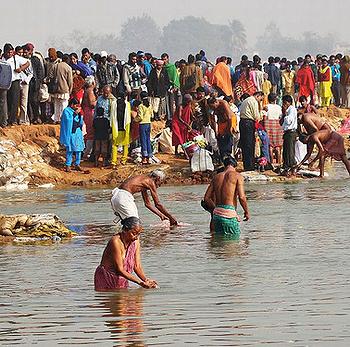 一名叫做達格(Ceren Burcak Dag)的土耳其裔青少年在2009年斯德哥爾摩少年組水資源競賽中,以其創新利用降雨而產生能量的方法拔得頭籌。
一名叫做達格(Ceren Burcak Dag)的土耳其裔青少年在2009年斯德哥爾摩少年組水資源競賽中,以其創新利用降雨而產生能量的方法拔得頭籌。
達格在世界水資源週於8月18日的頒獎典禮上表示:「藉著這個雨水與壓電效應的計劃,我們現在找到了一個新的能源來源。我希望我的作品將有助於發展下一代的能源控電板,結合雨能、太陽能和風能。 」
壓電效應(備註:機械能與電能互換的現象)就是當某些材料受到如降雨的力學應力而產生的電能。
達格使用特製的塑料聚偏氟乙烯(PVDF),一種穩定性高和純熱塑性含氟聚合物(thermoplastic fluoropolymer),將雨滴動能轉化成電能。
根據斯德哥爾摩世界水資源週公佈的一項針對15個國家15,000人進行的民意調查發現,水資源問題是這個星球上最受關注的環境問題,比空氣污染、自然資源枯竭、棲地喪失和氣候變遷還更受重視。
民調對7個包括加拿大、中國、印度、墨西哥、俄羅斯、英國、美國等國的500位受調者作深度調查。
在所有這些國家中,一半以上的受訪者認為政府有責任確保提供民衆乾淨的水源。當被問到是否民衆需承擔任何的責任時,各國間的反應差別很大,結果由高至低從墨西哥的76%到中國的30%。
爲制定全球守望淡水標準,環保組織世界自然基金會(WWF)、其他非政府組織、研究機構和企業合作夥伴於8月18日共同宣布成立全球水資源圓桌會議(Global Water Roundtable)。
 儘管圓桌會議的首要重點是透過與世界各地的利益相關者舉行一系列的會議,以制定責任制的環境和社會水資源利用和責任歸屬標準,但是,世界自然基金會還表示,該倡議可能會導致責任歸屬用水認證的誕生。
儘管圓桌會議的首要重點是透過與世界各地的利益相關者舉行一系列的會議,以制定責任制的環境和社會水資源利用和責任歸屬標準,但是,世界自然基金會還表示,該倡議可能會導致責任歸屬用水認證的誕生。
由斯德哥爾摩國際水資源研究所提供的統計數字,突顯了尋求解決全球水資源危機的迫切需要。
全球的水資源中,97%是鹽水。其餘3 %的淡水中,70%多凍結在極地冰帽裏。另外的30%主要分佈在土壤的水分或地下蓄水層中。
全球不到1%的淡水是容易取得並可讓人類直接使用的。其中,農業用水佔70%,工業用水佔22%,其餘的8%為住戶用水。
以用量來看,世界上前10大用水國依次為印度、中國、美國、巴基斯坦、日本、泰國、印尼、孟加拉、墨西哥和俄羅斯聯邦。
每個發達世界的兒童耗水量為發展中世界兒童的30至50倍。同時隨著人口迅速增長,水資源的抽取量於過去50年來成長了3倍。
人類為維護基本需求每天所需清潔水源為20到50公升( 5至13加侖)。
A Turkish teenager, Ceren Burcak Dag, has won the 2009 Stockholm Junior Water Prize for developing an innovative method for generating energy from falling rain drops.
"We have a new energy source from rain with a piezoelectric effect with this project," Dag said at the award ceremony held Tuesday night as part of World Water Week. "I hope that my work will contribute to the development of the next generation of energy panels where rain, sun, and wind are combined."
Piezoelectricity is the ability of some materials to generate an electric potential when mechanical stress, such as the impact of a raindrop, is applied.
Dag used the specialty plastic polyvinylidene fluoride, PVDF, a non-reactive and pure thermoplastic fluoropolymer, to transfer the kinetic energy of raindrops into electrical energy.
Water issues are the planet's top environmental problem, ahead of air pollution, depletion of natural resources, loss of habitat and climate change, according to a public opinion poll of 15,000 people in 15 countries released in Stockholm as part of World Water Week.
Pollsters did in depth surveys of 500 people in each of seven countries - Canada, China, India, Mexico, Russia, the United Kingdom and the United States.
In all those countries, more than half of those surveyed agree that government is responsible for ensuring clean water. When asked whether individual citizens are responsible, responses vary widely by country, from a high of 76 percent in Mexico to a low of 30 percent in China.
To develop global standards for freshwater stewardship, the conservation organization WWF and other nongovernmental, research and business partners Tuesday announced the formation of a Global Water Roundtable.
While the Roundtable's first focus will be a series of meetings with stakeholders around the world to set standards for responsible environmental and social water use and accountability, WWF says the initiative could lead to certification for responsible water use.
The Stockholm International Water Institute offers statistics that underline the urgency of finding solutions to the global water crisis.
Of all the water on Earth, 97 percent is salt water. Of the remaining three percent fresh water, some 70 percent is frozen in the polar icecaps. The other 30 percent is mostly present as soil moisture or lies in underground aquifers.
Less than one percent of the world's fresh water is readily accessible for direct human uses. Of that one percent, agriculture uses 70 percent, industry uses 22 percent, and eight percent is used by households.
The world's 10 largest water users, by volume, are India, China, the United States, Pakistan, Japan, Thailand, Indonesia, Bangladesh, Mexico and the Russian Federation.
A child born in the developed world consumes 30 to 50 times as much water as a child in the developing world. And with rapid population growth, water withdrawals have tripled over the last 50 years.
To ensure our basic needs, we all need 20 to 50 liters (five to 13 gallons) of clean water every day.

